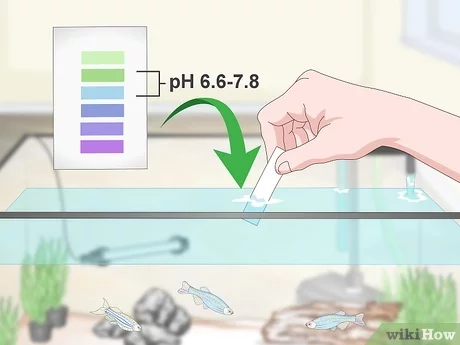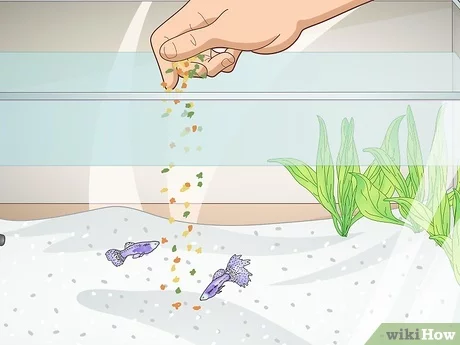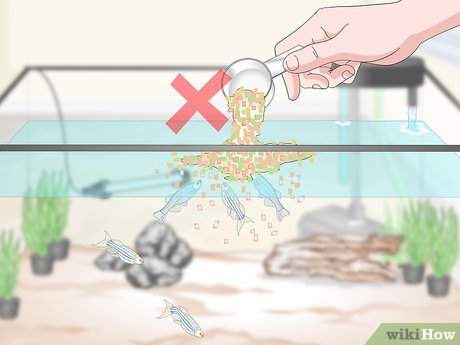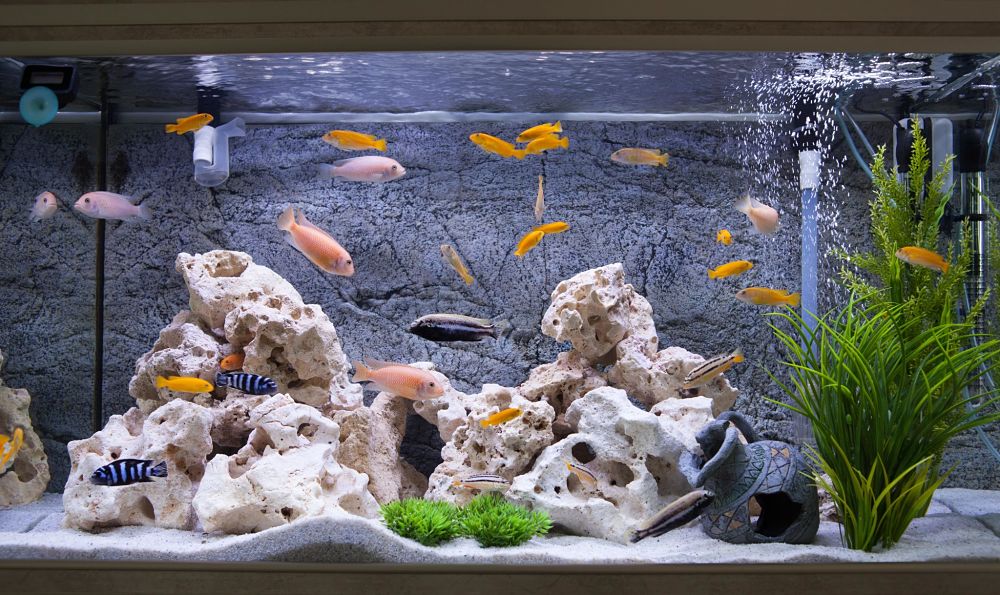For kids especially, adopting a pet is a joyful event. While not all homes can have dogs or cats, pet fish are a great substitute. Any room can benefit from a little underwater tranquilly brought about by fish tanks, which can teach children responsibility and offer hours of fun. This blog post will go over the advantages of owning a pet fish, the best fish for kids, and basic maintenance advice to make sure your aquatic buddies flourish. You’ll have all you need by the end to begin your family’s adventure into fishkeeping.
Choosing the Right Fish: It would be better to choose easy-to-care-for species that are ideal for kids.
Benefits of Pet Fish: Pet fish could be educational, therapeutic, and entertaining aspects for kids.
Essential Care Tips: Setting up the tank, feeding, and maintaining a healthy environment are minimum requirements for petting a fish.
Fish Selection
A profitable and pleasurable experience with fishkeeping depends on choosing the appropriate kind of fish. These fish species are good for beginners and are suitable for children:
Betta Fish
Since betta fish, sometimes referred to as Siamese fighting fish, are colorful and durable, novices often choose them. Their vivid colors and flowing fins are well-known, and they do well in tiny tanks (minimum 5 gallons). Although they do need warm water and frequent water changes, bettas are nonetheless comparatively low-maintenance.
Goldfish
Classic pets, goldfish come in many sizes and forms. Hardy and tolerant of a variety of water conditions are they. They do, however, need a bigger tank than many people realize—at least 20 gallons for a single goldfish—and they create more waste, which calls for a reliable filtration system.
Guppies
Little and vibrant, guppies are easy to look after and breed quickly. They are quite active and flourish in community tanks, offering lots of visual interest. Guppies do best in groups and need a tank at least 10 gallons.
Neon Tetras
Little, schooling fish with striking blue and red coloring are neon tetras. They flourish in community tanks and are quiet. Ten gallon or larger tanks should house a group of at least six neon tetras.
Zebra Danios
Hardy and lively, zebra danios are great for novices. They thrive under a range of tank conditions and are simple to look after. It is advised to keep them in groups and have a tank of at least 10 gallons to guarantee their happiness and activity.
Pet Fish Benefits
Important Information
Taking good care of pet fish offers kids a great educational opportunity. They pick up biology, responsibility, and the value of keeping a tidy and healthy surroundings. Youngsters may also learn about water habitats, fish behavior, and life cycles.
Pharmacological Aspects
One can feel less stressed and anxious when they watch fish swim. Fish moving rhythmically and the sound of bubbling water softly calming a home can be beneficial to both kids and adults.
Entertainment and Pleasure
Visually stunning, fish tanks offer children infinite amusement as they watch their aquatic friends interact and behave in a variety of ways. An enjoyable and artistic endeavor is to adorn the tank with plants, rocks, and other items.

Key Care Advice
Tank Setup
Correct fish tank setup is the cornerstone of a happy fishkeeping hobby. The important procedures are as follows:
1. Choosing the Tank: Choose a tank that will hold the kind and quantity of fish you intend to keep. As bigger tanks offer more consistent water conditions, they are typically easier to maintain.
2. Substrate and Decorations: Add plants, rocks, and hiding places along with a suitable substrate (gravel or sand). These give the fish essential enrichment and also make the tank look good.
3. Heating and filtering: Put in a high-quality filtering system to eliminate waste and maintain pure water. Keeping tropical fish will require a heater to keep the water temperature constant.
4. Cycling the Tank: Cycle the tank to create helpful bacteria that break down toxic waste items before adding any fish. For your fish’s health, this procedure—which can take many weeks—is essential.
5. Water Quality: Check the pH, ammonia, nitrite, and nitrate levels of the water on a regular basis. Fish sickness and stress can be avoided only by keeping their water quality high.
The feeding
Correct feeding of your fish is essential to their health and welfare. Some key points to consider:
1. Type of Food: Give the animal you are keeping a balanced diet. Combining pellets, flake food, and sometimes live or frozen goodies like brine shrimp or bloodworms, most fish thrive.
2. Scheduling: Give your fish just as much food as they can eat in a few minutes once or twice a day. Concerns with water quality and health might result from overfeeding.
3. Variety: To guarantee your fish get all the nutrients they need, vary the food. Boredom can also be avoided and natural foraging activities encouraged by a diversified diet.


Fish Tank Care
Your fish tank must be routinely maintained to be in top shape:
1. Water Changes: To clear the tank of waste and replenish the water, do partial water changes (approximately 20–25%) once a week. This keeps the water quality good and lessens the accumulation of dangerous materials.
2. Cleaning the Tank: To stop algae growth and clear trash, clean the tank’s walls, substrate, and decorations as needed. Use a scraper or sponge designed for aquariums to prevent scratching the tank.
3. Keep an Eye on Fish Health: Check your fish every day for any symptoms of sickness, such altered behavior, appearance, or appetite. More major difficulties can be avoided by early identification and treatment of health concerns.
4. Equipment Checks: Verify that all of the equipment—including the heater, lights, and filter—is operating as it should. For the stability of the environment, replace any malfunctioning equipment right away.
Selecting the Optimal Fish Tank
Although smaller tanks could look easier to handle, larger tanks are usually more stable and understanding of novice errors. Most youngsters start off well with a 10-gallon tank, which has enough room for a modest fish community.
Think on the following while choosing a fish tank for children:
Material
Most aquariums are constructed of acrylic or glass. Though heavier and more scratch-resistant than glass tanks, acrylic tanks are lighter and less prone to break. Picking between the two materials will depend on your particular requirements and tastes as they both have benefits.
The shape
Fish tanks can be circular, bow-front, or rectangular. Often the most useful, rectangular tanks offer more surface area for oxygen exchange, which is good for fish health.

The Educational Elements of Fishkeeping
The Learning of Responsibility
As they have to do routine chores like feeding, cleaning, and tank monitoring, caring for fish teaches kids responsibility. A feeling of obligation and responsibility is helped to be ingrained by this routine.
Studying Biology
Youngsters can study about several varieties of fish, their homes, and their behaviors. Viewing fish interactions and life cycles can pique curiosity in biology and ecology and offer a useful grasp of scientific ideas.
The Environment
Keeping up a fish tank calls for knowledge of the chemistry of the water and the surroundings. Youngsters get knowledge about the need of preserving a healthy ecology and the effects that pollution and habitat degradation have on aquatic life.
Fishkeeping’s Therapeutic Advantages
Reduced Stress
Fish swimming can be quite relaxing and reduce stress levels. An aquarium is a wonderful addition to a child’s bedroom or a family living area since of its tranquilly that may be created in any location.
Emotional support
Pet fish can offer kids company and emotional support. A youngster’s emotional development can be improved by the act of just showing compassion and understanding to another living thing.
A Guide to a Fruitful Fishkeeping Career
Engage Children in the Process
Take your kids along on every stage of assembling and caring for the fish tank. Allow kids to contribute to daily care tasks, decorate the tank, and select the fish. They will feel accountable and more a part of their new pets because of this involvement.
Keep It Basic
Start with durable, low-maintenance fish species and work your way up to increasingly intricate arrangements as your family gains experience. To reduce stress and hostility, avoid packing the tank too full and select suitable species.
Enlighten and Oversee
Children should learn about the needs and habits of their fish. Watch how they handle the aquarium and make sure they are caring for the fish appropriately.
Conclusion
Children may find it fulfilling and instructive to bring a pet fish into their house. Your aquatic friends will live in a healthy and happy environment if you select the appropriate fish species, put up a suitable tank, and adhere to basic care instructions. Kids that keep fish learn about biology and responsibility in addition to having infinite fun and therapeutic advantages. Taking the proper technique will make your family’s experience with fishkeeping enjoyable and educational.



